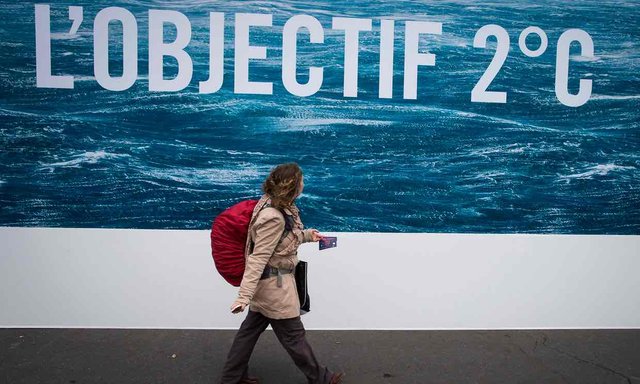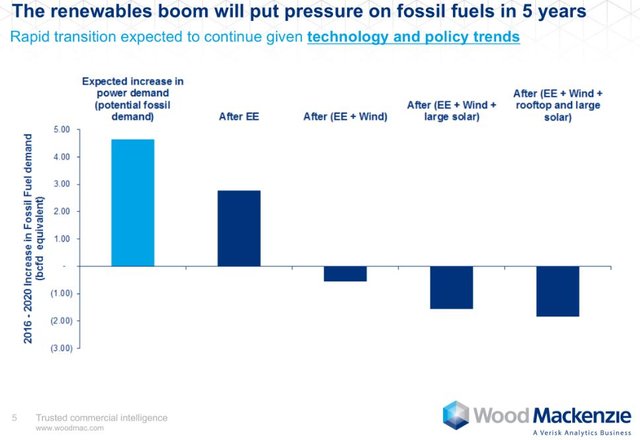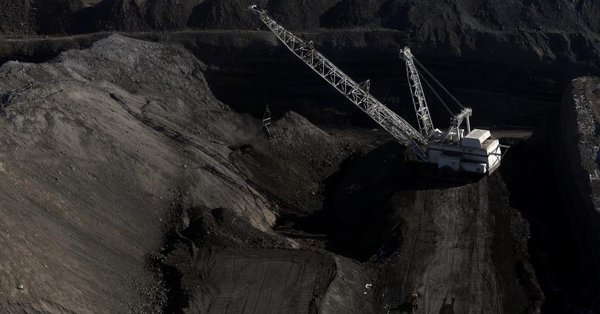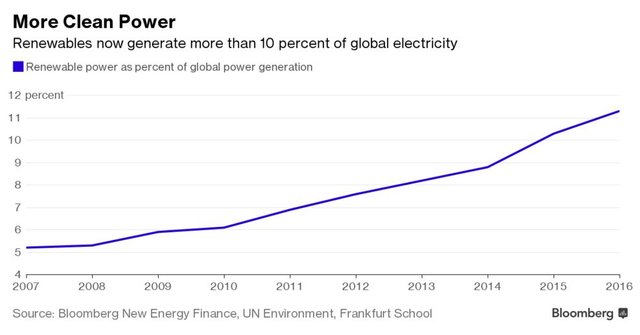Top news and views about Environment and Cleantech for 12 Apr 2017
(Tip: To open the tweet in a new window 'Right-Click' the 'Tweet This Story' text and 'Open link in new tab')
Climate change action is good for the economy - and Britain is the proof

Just before the Rio Earth summit 25 years ago, John Major, in whose cabinet I then served as environment secretary, made a bold prediction: reducing Britain’s carbon emissions in line with recommendations of climate science would not, he said, harm our economy: “Our initial measures ... will bring a worthwhile economic payoff to the country, to business and to ordinary people.”
This was a controversial statement at a time when solar energy, for example, was a costly technology better suited to spacecraft than British rooftops. And indeed the argument can still be heard that reducing greenhouse gas emissions will ruin our economies – even that it will return us to a pre-industrial living standard.
A quarter of a century later, the approach that we took has been richly vindicated. As research published on Monday by the Energy and Climate Intelligence Unitdemonstrates, in that period the average Briton has grown richer faster than citizens of any other G7 nation; at the same time, his or her carbon footprint has fallen faster than in any other G7 nation. While it would be stretching reality to argue that Britain’s economic success has been driven by its climate change policies, no one can seriously argue any more that our climate policies have generated economic harm.
I would argue that there are three principal factors why Britain tops the G7 league in terms of growing our economy while reducing our carbon emissions. We started earlier than most, we have been consistent, and we have used market forces wherever possible. Certainly our decision now looks to have been a prudent investment. British companies in low-carbon goods and services already turn over an estimated £83bn per year; and with Brexit opening the door for a new era of free trade with major countries in Asia and Latin America, most of which are pursuing their own clean energy transitions, this sector has the potential to become a major engine of trade and growth.
Full story at http://bit.ly/2o55A51
Coca-Cola produces over 100 billion disposable plastic bottles, Greenpeace says

Coca-Cola is failing to combat the environmental damage caused by it producing over 100 billion throwaway plastic bottles each year, a new analysis by Greenpeace has revealed.
Last March the fizzy drinks company came under fire for refusing to disclose how much plastic it produces in a survey of the top six global drinks manufacturers, conducted by Greenpeace.
However, the environment group now claims it has uncovered what it calls the company’s “eye-popping” use of throwaway plastic.
The charity looked at Coca-Cola’s annual sales figures of certain product lines and the proportion that they have represented in the company’s overall packaging mix since 2012.
Full story at http://ind.pn/2o4HPdy
Help us prove the demand for recycled Social Plastic by signing our digital petition.

Currently the best way to help reveal value in social plastic is to ask a brand to use #SocialPlastic using social media or direct email.
Full story at http://bit.ly/2nDvMaP
Renewables and Efficiency Are Eating Away at America’s Fossil Fuel Demand

America's energy transition is no longer theoretical.
Wind and solar are increasingly the lowest-cost resources getting connected to the grid, changing the investment calculus for utilities and dominating new capacity builds. Electricity demand nationwide continues to fall, even as millions more square feet of buildings are constructed. And in states across the country, distributed solar is decimating load growth.
These trends are adding up. In fact, renewables and efficiency together will cut the equivalent of 2 billion cubic feet of fossil fuel demand per day by 2020.
The chart below comes from Prajit Ghosh, the head of Americas power and renewables research at Wood Mackenzie. In the next five years, gross fossil fuel demand is expected to rise by 4 billion to 5 billion cubic feet per day. However, net demand -- gross demand minus efficiency and non-dispatchable wind and solar -- turns the trend around.
Full story at http://bit.ly/2o58FC2
Trump declares end to 'war on coal,' but utilities aren't listening

When President Donald Trump signed an executive order last week to sweep away Obama-era climate change regulations, he said it would end America's "war on coal", usher in a new era of energy production and put miners back to work.
But the biggest consumers of U.S. coal - power generating companies - remain unconvinced.
Reuters surveyed 32 utilities with operations in the 26 states that sued former President Barack Obama's administration to block its Clean Power Plan, the main target of Trump's executive order. The bulk of them have no plans to alter their multi-billion dollar, years-long shift away from coal, suggesting demand for the fuel will keep falling despite Trump's efforts.
The utilities gave many reasons, mainly economic: Natural gas - coal’s top competitor - is cheap and abundant; solar and wind power costs are falling; state environmental laws remain in place; and Trump's regulatory rollback may not survive legal challenges.
Full story at http://reut.rs/2o4WTHN
With More Bang for the Buck, Renewables Providing Most New Power

Renewables were the biggest new source of electricity last year as the cost of building new wind and solar farms fell.
Clean energy provided 55 percent of all new capacity added worldwide, the most ever, and total investment was about double the amount for generators driven by fossil fuels, according to a report published Thursday by UN Environment, the Frankfurt School-UNEP Collaborating Centre and Bloomberg New Energy Finance.
Investment in clean power dropped 23 percent from 2015 to $241.6 billion, meaning that the new capacity installed came at a lower price. The average capital expenditure for a megawatt of wind and solar fell more than 10 percent, according to the study, and they are some of the cheapest sources of electricity in some countries.
“Renewables are much more competitive than they were five years ago,” Angus McCrone, chief editor at Bloomberg New Energy Finance, said in an interview. “In an increasing number of places, wind and solar may be the cheapest option.”
Full story at https://bloom.bg/2nDAWU6
Prepared by @SydesJokes
Original post from: http://CrowdifyClub.com/SydesJokes